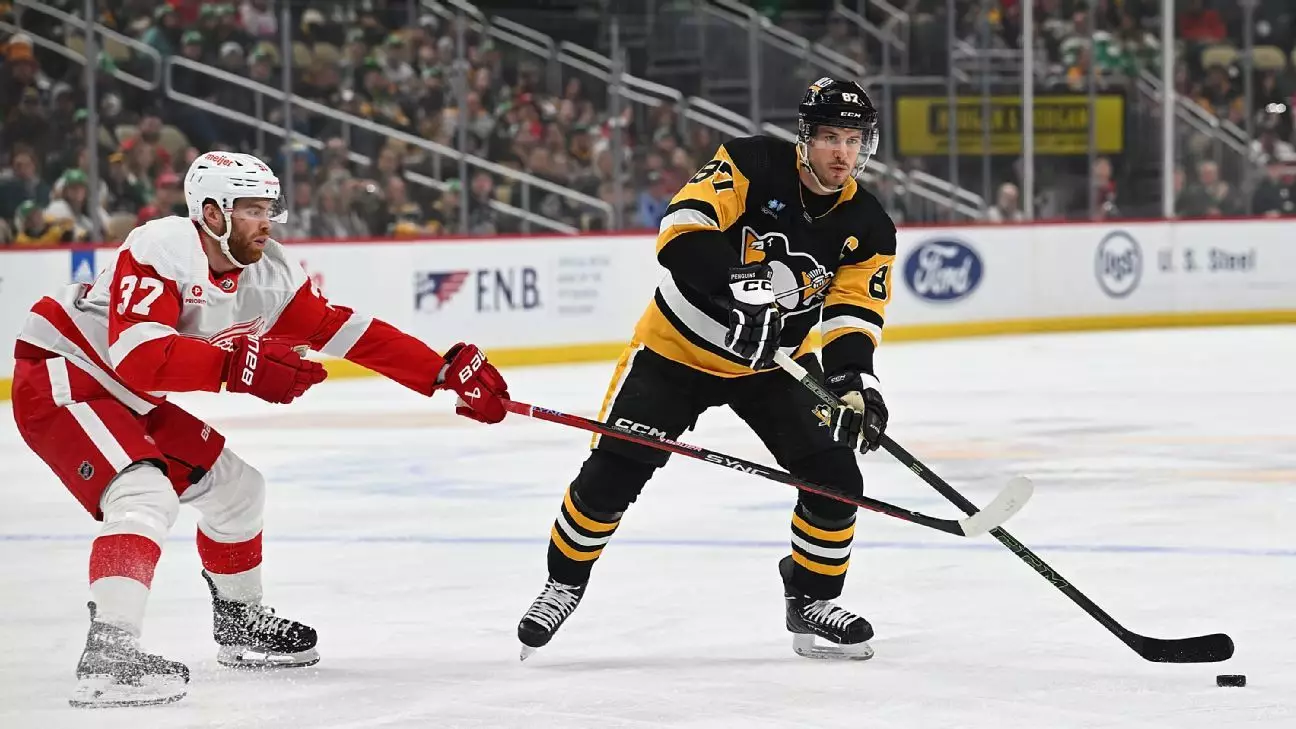As the NHL season approaches, Sidney Crosby, captain of the Pittsburgh Penguins, stands at a pivotal crossroads in his illustrious career. With the regular season set to begin on October 9, Crosby’s anticipation for a contract extension looms large. During the NHL/NHLPA player media tour in Las Vegas, he expressed optimism about finalizing a deal soon, though he remains uncertain about the exact timeline. This situation encapsulates the broader narrative surrounding an aging team, the historical significance of Crosby’s legacy, and the ongoing challenges of maintaining competitive prowess in a league that continually evolves.
Crosby, now 37 years old, is preparing to enter the final season of his 12-year, $104.4 million contract, which has undoubtedly cemented his status as one of the greatest players in NHL history. His record speaks volumes: a successful career filled with accolades, including three Stanley Cups and numerous personal honors. Not only has he been a key player for the Penguins since he was drafted first overall in 2005, but he has also been a significant figure in international hockey, evidenced by his selection for Canada’s team in the 4 Nations Face-Off tournament next February.
Despite Crosby’s undeniable talent and impressive performance—having scored 42 goals and amassed 94 points in the last season—the Penguins struggle to regain their championship stature. The team has experienced two consecutive post-season absences for the first time since Crosby entered the league. As management reevaluates strategies moving forward, the decision-making process seems to involve a delicate balance between honoring the team’s storied past and setting a course for future success.
General manager Kyle Dubas faces the complex task of navigating an aging roster that still possesses immense talent in players like Crosby himself, Evgeni Malkin, and Kris Letang. However, the team preparation extends beyond the immediate horizon as they consider the eventual transition that must occur when this core retires. Last season’s trade of Jake Guentzel, a star forward and unrestricted free agent, highlights a clear acknowledgment of this transitional phase, even as the team eyed playoff contention.
Crosby understands these challenges but remains steadfast in his commitment to the team and his own passion for the game. “I’ve been around for long enough to understand that there’s always challenges that come with that, probably even more so with our team,” he stated. His mature perspective reflects a dual understanding of both leadership and the complex mechanics of team management.
What sets Crosby apart, even as he navigates these complexities, is his unyielding fitness and a fervent love for the game. He emphasizes the importance of evaluating his performance year by year, and this year’s enthusiasm is no different from when he first entered the NHL. Crosby stated, “I feel really good. I’m [as] excited about going to training camp as I was my first year.” This passion is essential not only for his legacy but for instilling a winning culture within a team seeking reformation.
Pittsburgh has taken steps to recalibrate its roster by adding players like Kevin Hayes, Anthony Beauvillier, Cody Glass, and promising prospect Rutger McGroarty. While Crosby expresses hope that this retooling can lead to a competitive team, the reality remains daunting. A combination of fresh talent and previous roster members must ultimately blend into a cohesive and streamlined playing unit capable of contending in a fiercely competitive league.
The Penguins’ dilemma mirrors that of many sports franchises grappling with the idea of transition while possessing established stars. Crosby’s presence provides a beacon of hope, but it also raises questions about how best to surround him with complementary talent that aligns with the team’s future ambitions.
As Crosby’s contract extension hangs in the balance, Pittsburgh watches and waits. His leadership and on-ice performance will be scrutinized as the season progresses, but so too will the strategies and decisions made by the front office. The blend of nostalgia for past glories and the necessity for future adaptability embodies the core challenge for both Crosby and the Penguins.
Ultimately, the journey ahead encompasses not only Crosby’s performance and legacy but also the impending evolution of the team. Whether the Penguins can find a way to leverage their historical strengths while embracing the changes needed for future success remains to be seen. As Crosby aptly noted, every year brings new challenges and prospective opportunities—and in hockey, the path to victory is often anything but straightforward.


Leave a Reply